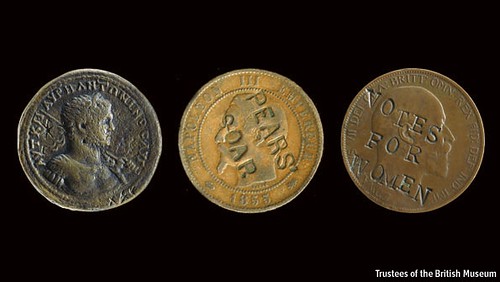
PREV ARTICLE
NEXT ARTICLE
FULL ISSUE
PREV FULL ISSUE
ARTICLE REVIEWS THE BRITISH MUSEUM’S NEW MONEY GALLERY
Alan Luedeking forwarded this article from The Economist on the British Museum’s new money gallery. Thanks!
-Editor
Hey! Who are they calling ODD?
-Editor
Money is a particularly good window on the past, says Ben Alsop, the gallery’s curator, because it is so universal. “We’re lucky, with this gallery, in the sense that money, going back 4,000 years, covers the whole of the world and the whole of history,” he says. His gallery can use its collection to talk about world history in a way that other departments of the museum, which focus on a particular period or part of the world, cannot. Moreover, visitors are already familiar with the subject matter. “People know what money means to them, and therefore what it may have meant to people in the past as well,” says Mr Alsop. The gallery exploits this familiarity to challenge the way we think about money. There is the standard history, as you would expect. It starts with cowrie shells, stone axes and jade; moves on to the earliest coins from Lydia, now part of Turkey, from around 650 BC, and the “spade money” and “knife money” from China from around the same time; continues with the emergence of paper money in China; and culminates with the switch to payment cards and mobile money in the modern era. But interwoven with this chronological display are countless examples of the unexpected cultural, political and religious uses of money. Throughout history it has always been more than just a medium of economic exchange. Money is arguably an early communications medium. Indeed, since money is passed from one person to another, you could even argue that it’s an example of social media. For centuries only gods or dead ancestors appeared on coins, but eventually rulers (in the Roman case, starting with Julius Caesar) realised they could be used to project images of themselves. Augustus looks young and dashing on his coins, whereas a series of coins of Nero emphasise his humanity, as he ages and gets fatter. But you do not need to be an emperor to send messages using money. The gallery includes a Roman coin from 215AD, on which the Christian “chi-rho” symbol has been scratched behind the emperor’s head; a French coin from 1855 overstamped with an advertisement for Pears Soap; and a 1903 British penny on which Edward VII’s face has been stamped with “Votes for women” by suffragettes (pictured below).

Piggybacking messages on coins in this way is just one of many recurring themes in the history of money.
The tradition of overstamping money continues today - see the following article.
-Editor
To read the complete article, see:
From shells to mobile phones: The British Museum’s new money gallery
(www.economist.com/blogs/prospero/2012/09/british-museums-new-money-gallery)
The Numismatic Bibliomania Society is a non-profit organization promoting numismatic literature. See our web site at coinbooks.org. To submit items for publication in The E-Sylum, write to the Editor at this address: whomren@gmail.com To subscribe go to: https://my.binhost.com/lists/listinfo/esylum All Rights Reserved. NBS Home Page Contact the NBS webmaster 
|
